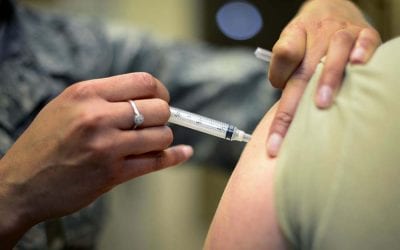By now, most everyone knows that Chesley B. “Sully” Sullenberger, the pilot of the ill-fated US Airways Flight 1549, used every bit of his ability, composure, and commercial and military flight experience to masterfully “crash” his crippled Airbus 320 “safely” in the Hudson River beside the skyscrapers of Manhattan. Miraculously, no one died.
Not only did Captain Sullenberger keep his passengers and crew safe, he managed to guide his plane clear of heavily populated New York City.
The Wall Street Journal put it this way.
For the first time in 50 years of commercial jet flight, the pilots of US Airways Flight 1549 successfully executed one of the most technically challenging maneuvers, landing a jetliner on water without fatalities.
Indeed, Captain Sullenberger kept alive this amazing statistic. US air carriers have gone two years without a single passenger fatality. Phenomenal!
As I watched the amazing video of the passengers standing on the wing of the A320 floating down the Hudson River, seeing them safe, waiting to be rescued, I began to think about what we as passengers could learn from their experience.
I was reminded of my own emergency takeoff incident in a Boeing 707, many years ago, and what it taught me.
Too many passengers, in my opinion, are completely unprepared to deal with an emergency. Few passengers listen to the preflight safety speech, and fewer yet look at the plane’s diagram on the safety card in the seat pocket, to know where each emergency exit is located. Many exit row passengers are not prepared or equipped to fulfill their duty in case of an emergency.
As I listened to Flight 1549’s passengers recount their experiences, I found they had learned the same things I did, from my emergency incident.
1. After taking my seat, I examine the plane’s cabin diagram to determine its exit locations. I count the rows from my seat to the two closest exits, fore and aft, so I know precisely where they are in case smoke fills the plane, obscuring my sight, and fire blocks my exit in one direction.
2. When in the back of the plane I make sure I know where the closest exit forward is located. They normally don’t open the rear exits in the case of a water landing, as was the case for Flight 1549.
3. Make sure a life vest is under my seat, and can be freely removed. If not, I immediately speak with the flight attendant about this. Many 1549 passengers were without a life vest on the wing.
4. I keep my jacket or coat with me in cold weather during takeoff and landing, in case of an emergency. I stow my jacket or coat in the overhead bin well after takeoff, and retrieve it before landing. Did you see how many Flight 1549 passengers were shivering?
5. I carry small valuables, IDs and keepsakes, in my pants, or in zippered or inside pockets in my jacket in case of emergency so they go with me.
6. I wear a good pair of shoes or leather sneakers, never sandals or flip-flops.
7. I wear long pants and long sleeved shirts, made with natural fibers (synthetics or high synthetic content blends can melt on your skin in a fire, causing serious and even fatal wounds) to protect my skin from the possibility of intense heat and fire, but more importantly, to be honest, to help me slide down the wing of an aircraft or emergency slide. Experience has taught me going down that slide can hurt.
8. For women, wearing heels may make an airborne fashion statement, but you don’t want to be wearing them in case of an emergency exit from a plane.
9. During a flight I keep my seat belt on when seated. That saved me from serious injury once. While circling Lisbon, we hit an air pocket. Several unbelted passengers had serious head injuries when their heads hit the underside of the overhead bins.
10. In case of emergency, it goes without saying that you’ve got to listen to every instruction from your flight crew and carry them out flawlessly.
11. Once the plane has made it down, and stopped, leave your belongs behind and depart the plane quickly and orderly. Once out of the plane, get as far away from it, as quickly as possible.
I hope you never have an air emergency, but if you do, be prepared.
Happy landings!
After many years working in corporate America as a chemical engineer, executive and eventually CFO of a multinational manufacturer, Ned founded a tech consulting company and later restarted NSL Photography, his photography business. Before entering the corporate world, Ned worked as a Public Health Engineer for the Philadelphia Department of Public Health. As a well known corporate, travel and wildlife photographer, Ned travels the world writing about travel and photography, as well as running photography workshops, seminars and photowalks. Visit Ned’s Photography Blog and Galleries.

